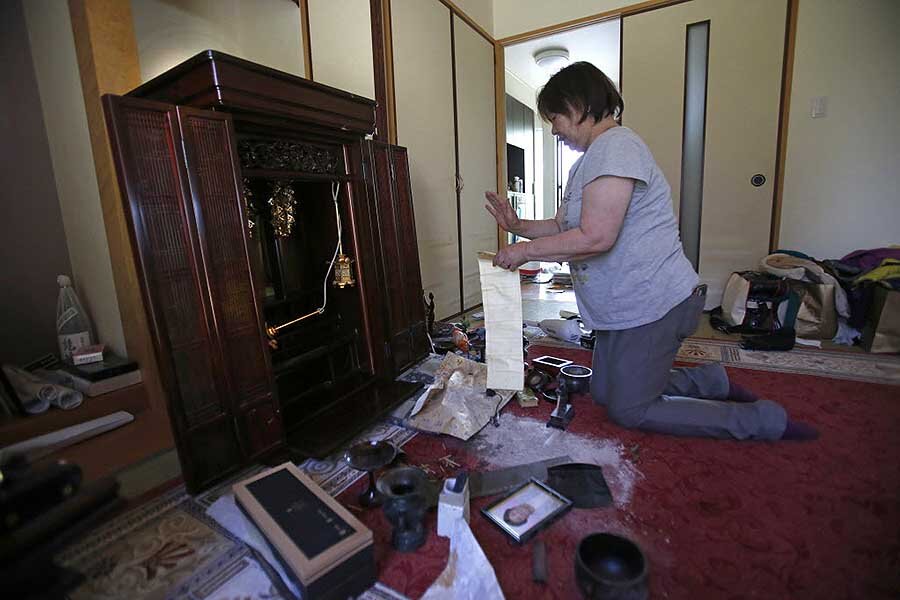Japan shifts to recovery mode after 'strong' earthquake
Japan worked to return to normal on Friday, as nearly 44,500 people evacuated their homes and settled into temporary shelters after Thursday evening's quake, reported between 6.2 and 6.5 on the Richter magnitude scale, which is classified as "strong."
"I'm sure we have to be ready for a prolonged evacuation, but I don't have a sense of reality about this," one Kyushu Island resident told The Japan Times.
The earthquake, which struck near the city of Kumamoto on the island of Kyushu, sent more than 100 aftershocks rippling through Japan's third-largest island, and there could be more to come. The quake, which began around 9:30 Thursday evening, killed nine people and injured more 1,000 more.
Despite the severity of the quake, Japan's Meteorological Agency says there is no risk of a tsunami because the earthquake was primarily centered under land. No damage to nuclear facilities has been reported, either. The Sendai Nuclear Power Plant on Kyushu is the only nuclear plant still in operation in Japan, after most reactors were closed in the wake of the devastating Tohoku quake and tsunami in March 2011, which resulted in a meltdown at the Fukushima plant.
The response from disaster relief efforts was immediate. Prime Minister Shinzo Abe mobilized 3,000 service people, including police and fire rescue personnel, to engage in rescue work, according to CNN.
"This is an earthquake that is going to shake for a long time," CNN meteorologist Chad Myers said told the network Friday. "All of a sudden you have a cracked building, and it wants to fall down with the second shake."
In one particularly heroic rescue, an eight-month-old baby was pulled from the rubble of her flattened house in Mashiki, a Kumamoto suburb that suffered some of the worst damage. The infant was completely unharmed and was reunited with her parents, six hours after a rescue team first tried to reach her.
Japan has one of the world's most extensive earthquake early-warning systems, with a network of seismic sensors picking up evidence of an earthquake soon after the seismic event starts, within moments of the first shock.
Phone companies and media outlets leapt into action as news of the quake broke, providing valuable resources to people without Wi-Fi or access to a television in the wake of the disaster. Three of Japan's largest telecommunications providers, NTT Docomo Inc., KDDI Corp., and SoftBank Corp., activated emergency public Wi-Fi hot spots in the immediate area of the earthquake, accessible to anyone regardless of their carrier. The messaging app Line also offered free domestic calls, albeit with a time limit.
On Thursday, NHK, Japan's largest broadcasting organization, offered live streaming of the news for people without TV access. NHK also posted English-language video updates on its website.
"At the time of the Great East Japan Earthquake [in 2011], some people complained they couldn't connect to the Internet because base stations of phone carriers they were contracted to had collapsed," a spokesman for Wireless Lan Business Promotion Association, which helped coordinate the Wi-Fi hot spots, told The Japan Times. "By using WiFi, anyone can access the Internet no matter who they have a contract with."







